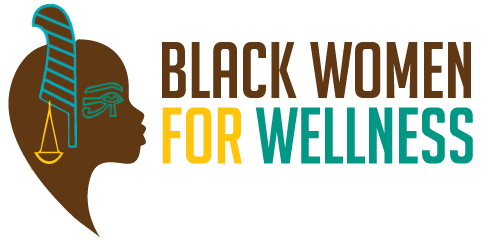Exploring the Connection Between Food, Mood, and Mental Health: Insights from a Recent Event
Summary
Food, mood, and mental health is a reminder of the complex relationship between our diets and emotional well-being. This Kitchen Divas "Food & Mood" event, aimed at this very topic, brought together culinary experts in a dialogue on the ways our food choices impact our lives.

In our continuous journey toward holistic wellness, the intricate relationship between what we eat, how we feel, and our overall mental health cannot be overlooked.
This Kitchen Divas “Food & Mood” event, aimed at this very topic, brought together culinary experts in a dialogue on the ways our food choices impact our lives.
The session, which included cooking demonstrations and educational discussions, was a testament to the growing awareness and interest in the nexus of nutrition and mental well-being.
Food, Mood & Mental Health: The Culinary Perspective
The event featured two remarkable chefs, Chef Noel and Chef Carmen, each bringing their unique insights and culinary expertise to the table.
Through their cooking demonstrations, they showcased not just the art of preparing delicious, healthy meals but also underscored the significance of mindful eating.
The chefs shared recipes that were not only a treat to the taste buds but also conducive to a balanced mood and emotional health.
From savory chickpea tuna sandwiches to delectable homemade chocolates, the dishes served as a reminder that healthy eating does not have to come at the expense of flavor or joy.
Recipes
Chickpea Tuna Sandwich Recipe
A savory recipe shared by Chef Noel, made with chickpeas, celery, shredded Nori sheets, onions, lemon, avocado, tomato, onion, vegan mayo, and Ezekiel bread. It’s described as simple, quick, and versatile, suitable for sandwiches, crackers, or lettuce wraps.
Ingredients:
- 1 can of chickpeas, rinsed and drained
- Celery, finely chopped
- Shredded Nori sheets
- Red onions, finely chopped
- Juice of 1 lemon
- Avocado, sliced
- Tomato, sliced
- Vegan mayonnaise
- Ezekiel bread or any bread of your choice
- Salt, pepper, garlic powder, and smoked paprika to taste
Instructions:
- Place the chickpeas in a food processor and pulse a few times to break them down into a chunky consistency. Alternatively, you can mash them in a bowl using a fork or potato masher.
- Add the chopped celery, shredded Nori, chopped red onions, lemon juice, vegan mayonnaise, and seasonings (salt, pepper, garlic powder, smoked paprika) to the chickpeas. Mix until well combined.
- Taste the mixture and adjust the seasoning if needed.
- To assemble the sandwich, take two slices of Ezekiel bread and spread the chickpea mixture on one slice.
- Add slices of avocado and tomato on top of the chickpea mixture.
- Cover with the other slice of bread, cut diagonally for presentation, and serve.
Homemade Chocolate Recipe
Chef Carmen demonstrated how to make a healthier version of chocolate using coconut oil, cocoa powder, a vegan protein powder for added nutrients, and optional sweeteners like agave. She also suggested adding toppings like walnuts, dried blueberries, or cacao nibs for extra flavor and health benefits. This recipe is highlighted as a guilt-free treat that can be customized according to personal preferences.
Ingredients:
- Coconut oil, melted
- Cocoa powder
- Vegan protein powder (optional for added nutrients)
- Agave or another sweetener to taste (optional)
- Vanilla extract (optional for flavor)
- Toppings: walnuts, dried blueberries, cacao nibs, etc.
Instructions:
- In a bowl, mix the melted coconut oil with cocoa powder until smooth. If you’re using protein powder, add it to the mixture now.
- If desired, sweeten the chocolate mixture with agave or your sweetener of choice. Add a splash of vanilla extract for additional flavor.
- Prepare a mold or mini muffin tin with paper cups. If desired, place your toppings (walnuts, dried blueberries, cacao nibs) at the bottom of each mold or cup.
- Pour the chocolate mixture over the toppings in each mold or cup, filling them to the desired level.
- Place the mold or muffin tin in the freezer until the chocolate sets and hardens.
- Once set, remove the chocolates from the mold or paper cups and enjoy your guilt-free treat.
Understanding Food Psychology
While the culinary aspect was enlightening, the conversation also touched on a crucial gap in our understanding of food’s impact on mental health—the psychological dimension.
The dialogue highlighted the need for a more profound exploration into why we gravitate toward certain foods, especially in times of stress or emotional turmoil.
It became evident that to truly harness the power of food as a tool for mental wellness, we must delve deeper into the psychology of our food choices.
The discussion pointed to the potential of bringing in experts who specialize in the intersection of psychology and nutrition.
Such professionals could offer invaluable insights into how different foods affect our brain chemistry, mood, and overall mental health.
They could also address the cultural and personal factors that shape our eating habits, providing a holistic view of nutrition’s role in mental wellness.
Future Directions
As we reflect on the lessons from the recent event, it’s clear that the conversation around food and mood is only just beginning.
There’s a palpable need for a more nuanced discussion that incorporates the psychological, cultural, and nutritional aspects of eating.
Future sessions could benefit from the expertise of psychologists who specialize in nutrition, offering a comprehensive understanding of how our diets influence our mental and emotional well-being.
Moreover, considering the diverse ways people interact with food, there’s a wealth of knowledge to be shared on how we can make more informed, healthful choices without sacrificing the pleasure and comfort food brings into our lives.
Whether through cooking workshops, panel discussions, or digital content, the opportunities to deepen our understanding and improve our health practices are boundless.
In Conclusion
Food, mood, and mental health is a reminder of the complex relationship between our diets and emotional well-being.
As we move forward, let us continue to seek out knowledge, share experiences, and embrace a more holistic approach to wellness.
By combining culinary artistry with psychological insights, we can empower ourselves and our communities to lead healthier, happier lives.



